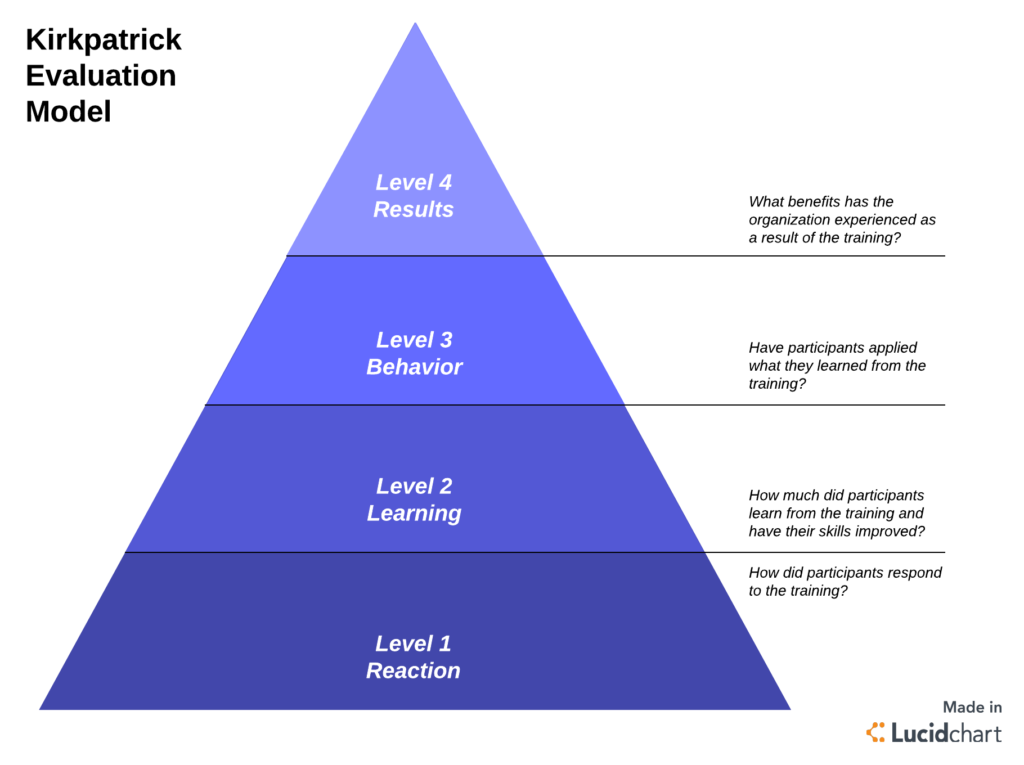Sales training is an integral part of the business of any company. But many organizations have doubts about the trainings because they worry about the investments not giving returns.
Or the other way it is not knowing ways to measure the success of the sales training in an objective way.
However, what begs to be answered is, how do most companies who continue to invest in training are able to evaluate the effectiveness of the Sales Training.
In this article, we cover the popular model which has been in practice for several decades and also how we at GrowthAspire bring this to our own training
There are 4 heads under which this can be done:
- Ways to Measure
- What to Measure
- How to Measure
- When to Measure
At GrowthAspire, we intend to simplify the process of evaluation. We do understand that quantifying something as fluid and dynamic of sales training can be a tough ask. And for that reason, we use the Kirkpatrick Model.
Designed by Dr. Donald Kirkpatrick (1924 – 2014) in the 1950s, this model runs through the intricacies of sales training and provides the management with a simple to understand scale.

https://www.lucidchart.com/blog/how-to-use-the-kirkpatrick-evaluation-model
Level 1: Reaction
This level studies how the participants respond to the training being provided. It is extremely important to understand their reaction to evaluate the effectiveness of the program.
The ways to measure this level can be performed through the following ways:
- Online Assessment
- Interviews
- A survey to judge the mood of the participants immediately after the training session
- Post Training Questionnaires
Level 2: Learning
Once we have known the response of the participants, we look at what knowledge they may have acquired. This is to evaluate the strength of the content and the effectiveness of the delivery:
What to measure at this level can be done through the following ways:
- Observations by peers and instructors
- Exams and interviews
- Comparison to a control group and evaluating the strengths and the weaknesses
- A distinct scoring process to remove any ambiguity about the level of understanding of the incumbents.
Level 3: Evaluation
This level seeks to understand the change in the behavior of the participant after attending the session. Assessing the change will help the trainers and peers to figure out the effectiveness of the entire process of sales training. The usual heads that are looked into are Knowledge, Mindset, and skills.
The How to Measure in this level can be done in the following manner:
- Observations and Interviews
- The change will be slow and hence so will be the evaluation process. It has to be subtle and can only become aggressive once the change becomes more pronounced
- Surveys and control group comparison
- 360 degrees’ feedback sessions
Level 4: Result
And finally the most important level, which will decide how effective the training was. Level 4 is the primary objective of the organization and the determining points ideally would be Lowered spending, higher returns on investments, more productivity and greater sales by volume.
It usually is a tough ask to quantify sales training, but When to Measure can be strategized through the following methods:
- A clear plan to evaluate the participant and the heads that would be considered for measuring the effect will have to be mentioned to the individual
- Enough time needs to be provided for a positive change to occur
- Improper observation leads to faulty conclusions, so care needs to be taken to establish a definite link between training and change in behavior
The Kirkpatrick Model gives us a glimpse of how a training program can be evaluated for the overall benefit of the organization. Greater the precision of the evaluation, better will be the outcome.
